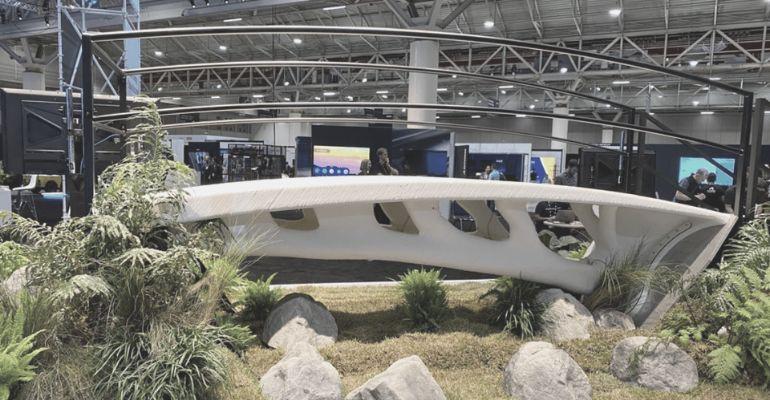Lebanese engineering firm Dar Al-Handasah has created a smart bridge in collaboration with American software giant Autodesk (AI). The smart bridge uses 3D printing, robotics, and artificial intelligence to design and build itself.
The prototype of the five-meter bridge was designed in the UAE. It is part of the engineering firm's attempts to use the nation's digital technologies and skills to provide a safer, more sustainable, and more intelligent design.
According to a statement made by Dar, the bridge is created using Autodesk's Fusion 360's generative design functionality. The company also highlights that the bridge's main component is a two-meter interactive pedestrian bridge. This is constructed of fibre-reinforced polymer (FRP). It was conceptualized and created using cutting-edge manufacturing techniques such as additive manufacturing, robotics, and generative design.
Autodesk University (AU) 2022, held in New Orleans, Louisiana, from September 27 to 29, including the unveiling of a real-scale 5-meter 3D smart pedestrian bridge. The Red Sea Project, SYSTRA, Abu Dhabi Municipality, and the Ministry of Culture and Youth were among other Middle Eastern organizations that attended AU 2022.
ADVANTAGES OF THIS 3D PRINTING AND ADDITIVE MANUFACTURING IN THE MENA CONSTRUCTION INDUSTRY
Architects and designers have greater creative flexibility thanks to 3D printing and manufacturing. This is because 3D printing robots are not constrained by formwork and conventional building techniques. In contrast, these robots can create custom components and sections. So, this makes it possible to realize designs that defy convention, are aesthetically attractive, and still have all the features of traditional buildings.
Utilizing a robot with 3D printing capabilities, like the one used in the collaboration between Dar Al-Handasah and Autodesk, may also reduce the risks to construction workers. This would work via either removing hazards present in specific locations (such as working at heights) or by facilitating off-site construction.
Another area where additive manufacturing outperforms traditional construction is sustainability. It eliminates the need for formwork and paves the way for the use of environmentally friendly and sustainable materials. This works just as well with conventional materials like metals and concrete. But it reduces waste and therefore leads to a building or structure with a significantly reduced carbon footprint.
So, implementing innovative technologies like additive manufacturing and 3D printing will prove instrumental in the Middle East. They will help countries such as the UAE with their net-zero emissions targets for 2050 to successfully realize their goals.

